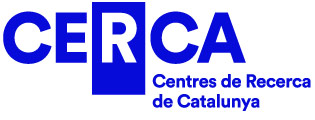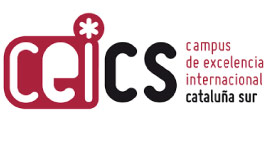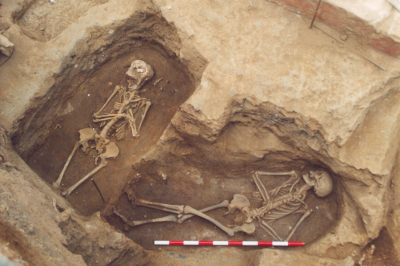
A new study published in PLOS ONE compares biomolecular, anthropological, and archaeozoological data from the Roman necropolis of Vila de Madrid (Barcelona, Catalonia).
Researchers from the University of Valencia (UV), the Catalan Institute of Classical Archaeology (ICAC), and the Vic University (UVic) reconstruct the composition of funerary meals in a necropolis from the Western fringe of the Roman Empire and discover more information about the rituals that accompanied the deceased to the otherworld.
Despite being the transit to the afterlife a key social milestone in Ancient Rome, researchers identified that foods consumed during funerary meals were mainly day-to-day staple foodstuffs. The team discovered a high degree of similarity between types of meat consumed regularly and those offered at funerary banquets, suggesting that the importance of the afterlife journey was not enough to compensate for the use of more expensive foods in them.
Afterlife rituals in the Ancient Rome
One of the ways in Roman society to express economic and social differences between individuals was through funerary meal rituals
The afterlife in Roman religion was the milestone that had to be reached after death upon complying with several funerary rituals. Part of these rituals consisted of funerary offerings, banquets, and sacrifices of animals, performed to ensure the protection of deities and the memory of the deceased. However, little is known about their composition, other than what is shown in written sources.
In a new study published in the journal PLoS ONE, a multidisciplinary research team investigates these funerary banquets through a direct approach by analysing the isotopes of human and animal collagen, as well as by studying the human skeletal remains and the archaeozoological assemblage present in the necropolis.
The isotope analyses, from almost 100 human and faunal specimens, combined with the osteological study of the human remains (age, sex, and health status) from the burials and faunal remains from funerary meals and offerings, have revealed novel insights into the actual “splendour” of the banquets, and a possible differential treatment of the deceased that would perpetuate social differences into the afterlife.
Researchers Domingo C. Salazar-García, from the University of Valencia, Lídia Colominas, from the Catalan Institute of Classical Archaeology, and Xavier Jordana, from the Vic University and the Central University of Catalonia, contributed to the study. The research received funding from the Investigación Agencia Estatal de Investigación (EUR2020-112213 & RYC-2019-026732-I) and from the Generalitat Valenciana (CIDEGENT/2019/061).
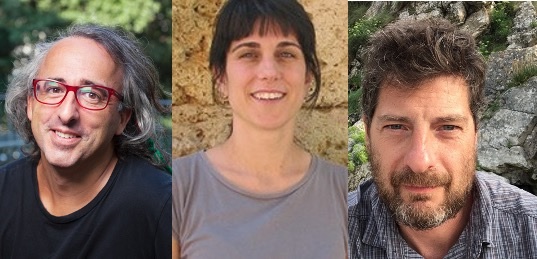
A not-so-exciting funerary meal, if a meal at all
For this study, researchers had to combine traditional archaeozoological and anthropological techniques with biomolecular archaeology, studying carbon and nitrogen stable isotope composition of animal foods and of human bones. Using this multiproxy approach, researchers reconstructed the composition of meal funerary banquets and the actual foods that the deceased had consumed regularly during life.
Contrary to what is expected from pompous Roman funerary meals, it seems that the common population did not throw a big feast, and used the same common foods as during daily life for the banquets. Amongst those foods, mainly pork and beef, followed by caprines and chicken. Not many exotic foods, wild animals, nor aquatic foods, were present.
Furthermore, most of the burials did not even present food offerings, nor did their families perform banquets of any type, despite the fact that these rituals were stipulated by law. “We were able to show that common people didn’t always comply law regarding funerary feasts, and even if following it, spent a low amount of economic resources on the funerary meals”, said Domingo C. Salazar García, lead author and CIDEGENT researcher from the Universitat de València.
Money is money, and whatever the importance of the afterlife in Ancient Roman Society, clearly the priority was the living people. Micro-resistances to established unreasonable rules were clearly already present at the time, Domingo C. Salazar.
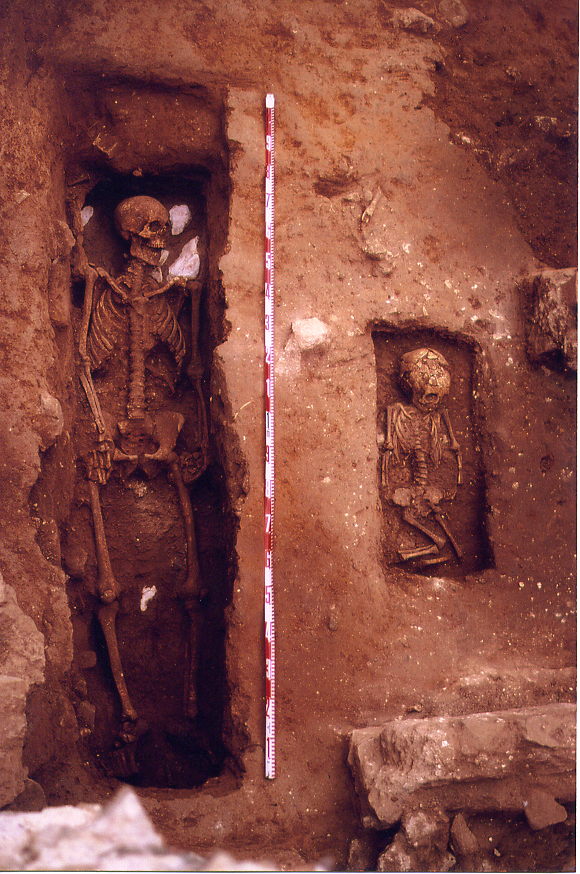
Social differences in the afterlife?
It is well known that different social strata existed in Ancient Rome, being wealth and political status of key importance in the social hierarchy. At the Vila de Madrid necropolis, humans interred were mainly people of limited purchasing power. “We know this both from the simple typology of the burials, and from the anthropological study that indicated a very low life expectancy in this population,” says Xavier Jordana, physical anthropologist, and associate professor at UVIC-UCC, who analysed the human skeletal remains.
To extrapolate at the site if social hierarchy was translated to the symbolic afterlife world to which the deceased was transported once dead is difficult. However, the study documents a high consumption of meat by adult males during their lives and a higher presence of offerings in adult male burials.
Therefore, “these ritual and diet differences likely show sex inequalities during life that could be extrapolated to the afterlife through the funerary rituals. Clearly, one of the ways in Roman society to express economic and social differences between individuals was through funerary meal rituals”, says senior author Lídia Colominas, Ramón y Cajal researcher at the Catalan Institute of Classical Archaeology.
Moving forward
This first study is only a first insight into the plethora of information that the combination of biomolecular analysis and traditional archaeozoology and anthropology can reveal about social structure, symbolic behaviour, and the afterlife linked to dietary practices and funerary banquets.
Further analysis of strontium isotopes could inform on individual provenance, proteomics, and micro-remains on dental calculus will tell us more detailed information on non-regular and plant foods consumed by the deceased in life, and aDNA will give us information on ancestry. Furthermore, studies like this one should be performed in necropolis from around the entire Ancient Rome, including the earlier Republican times.
“Food for the soul and food for the body. Studying dietary patterns and funerary meals in the Western Roman Empire: an anthropological and archaeozoological approach”, PLoS ONE 17(8): e0271296
Authors: Domingo C. Salazar-García, Lídia Colominas, Xavier Jordana
DOI: https://doi.org/10.1371/journal.pone.0271296



